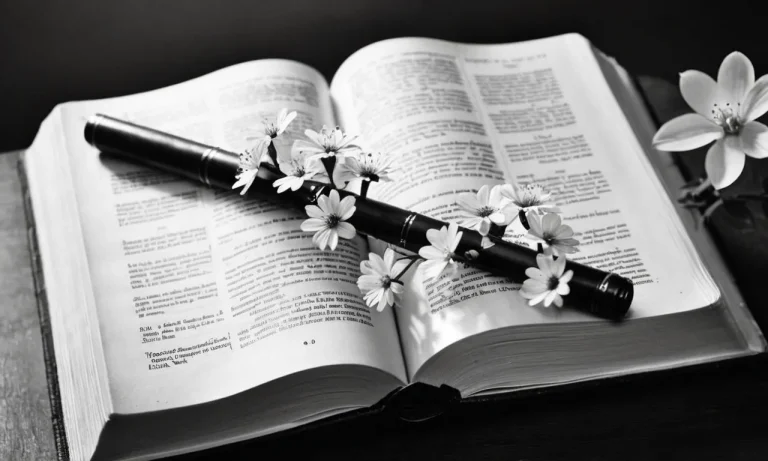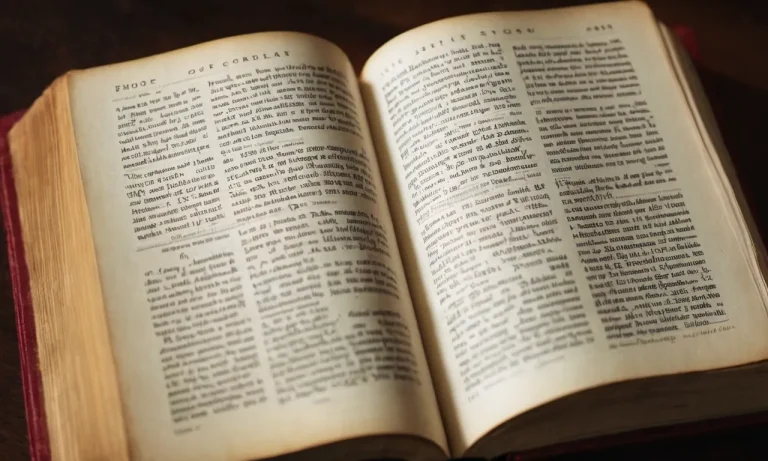Deep Meaning Of Woman Symbols: Strength And Courage Embodied
Throughout history, women have been revered as symbols of strength, resilience, and unwavering courage, transcending societal norms and breaking barriers. These powerful symbols have become beacons of inspiration, reminding us of the indomitable spirit that resides within every woman.
If you’re short on time, here’s a quick answer to your question: Woman symbols represent the profound depths of feminine power, encompassing attributes such as nurturing, perseverance, and the ability to overcome adversity.
They serve as reminders of the innate strength and courage that women possess, inspiring generations to embrace their true potential.
In this comprehensive article, we will delve into the deep meaning of woman symbols, exploring their historical significance, cultural representations, and the enduring impact they have had on shaping our understanding of what it means to be a woman.
We will uncover the stories behind iconic figures, mythological goddesses, and contemporary icons, each embodying the essence of strength and courage in their own unique way.
Goddesses and Mythological Figures
Athena: The Embodiment of Wisdom and Warfare
In Greek mythology, Athena stands as a powerful symbol of strength, intelligence, and strategic warfare. As the goddess of wisdom and courage, she represents the harmonious balance between intellectual prowess and the unyielding spirit of a warrior.
According to Theoi Project, an authoritative website on Greek mythology, Athena was revered for her strategic acumen and her ability to guide heroes in times of conflict. Her unwavering determination and keen foresight made her an invaluable ally on the battlefield, earning her the epithet “Athena Promachos,” meaning the “Athena who leads in battle.”
Athena’s influence extended far beyond the realm of war, as she was also the patron of various crafts and skills, including weaving, pottery, and agriculture. Her multifaceted nature reflects the multitude of roles women have played throughout history, shattering the notion that they are confined to a single domain.
With her wisdom and courage, Athena embodies the strength and resilience that women possess, inspiring generations to embrace their inherent power and pursue their passions with unwavering determination.
Kali: The Fierce Protector and Destroyer
In the rich tapestry of Hindu mythology, Kali stands as a formidable and awe-inspiring figure, representing the cyclical nature of creation and destruction. As the embodiment of shakti (divine feminine power), she is revered for her fearlessness and her role as a protector of the righteous.
According to Ancient History Encyclopedia, Kali is often depicted with a fierce countenance, adorned with a necklace of human heads and a skirt made of severed arms, symbolizing her dominion over death and her ability to conquer ego and ignorance.
Kali’s fierce and seemingly destructive nature is a metaphor for the power of transformation and rebirth. Just as a forest fire clears the way for new growth, Kali’s destructive aspect paves the way for regeneration and renewal.
Her unwavering courage and strength in the face of adversity have inspired countless women to embrace their inner power and confront the challenges of life head-on. Kali’s mythology reminds us that true strength lies not in the absence of fear, but in the ability to face it with unwavering determination and resilience.
Oya: The Fearless Warrior of the Yoruba Pantheon
In the vibrant realm of Yoruba mythology, Oya stands as a fierce and formidable goddess, embodying the indomitable spirit of the female warrior. As the goddess of wind, storms, and lightning, she is revered for her strength, courage, and unwavering determination.
According to Yoruba Spiritual Transformation, a website dedicated to Yoruba culture, Oya is often depicted as a powerful huntress, wielding a double-edged sword and adorned with beads and colorful cloths, symbolizing her dynamic and ever-changing nature.
Oya’s mythology serves as a powerful reminder of the resilience and strength that women possess. She represents the ability to navigate through life’s storms and emerge victorious, inspiring women to embrace their inner warrior and confront challenges head-on.
Her fearlessness in the face of adversity and her unwavering loyalty to her principles make her a revered figure among the Yoruba people and a symbol of empowerment for women worldwide.
Historical Icons of Strength and Courage
Joan of Arc: The Maid of Orléans and Fearless Warrior
In the annals of history, few figures embody strength and courage quite like Joan of Arc. Born in 1412 in the village of Domrémy, France, this extraordinary young woman would go on to become a legendary military leader and a symbol of unwavering faith.
At the tender age of 17, Joan claimed to have received visions from God, instructing her to aid the future King Charles VII in the Hundred Years’ War against the English. Donning armor and wielding a sword, she led the French troops to a pivotal victory at the Battle of Orléans in 1429, breaking the English siege and turning the tide of the war.
Her bravery and determination inspired a nation and earned her the moniker “The Maid of Orléans.” Despite being captured and ultimately executed at the age of 19, Joan’s legacy as a fearless warrior and a symbol of patriotism has endured for centuries.
Biography.com celebrates her as “one of the most inspirational figures in human history.”
Harriet Tubman: The Conductor of the Underground Railroad
Born into slavery in Maryland, Harriet Tubman’s life was a testament to the indomitable human spirit. After escaping to freedom in 1849, she risked her life time and again to guide hundreds of enslaved individuals to freedom through the Underground Railroad, a network of secret routes and safe houses.
Tubman’s courage and determination were unparalleled, as she made an estimated 19 trips back to the South to liberate her family and others from the shackles of slavery. Her bravery earned her the nickname “Moses,” and her impact was profound – she not only rescued countless lives but also served as a Union spy during the Civil War and later became an advocate for women’s suffrage.
According to Harriet-Tubman.com, “her legacy as a freedom fighter and champion of human rights continues to inspire generations.” 😊 Tubman’s life is a shining example of the strength and resilience of the human spirit in the face of unimaginable adversity.
Malala Yousafzai: The Advocate for Girls’ Education
In the 21st century, Malala Yousafzai has emerged as a powerful voice for girls’ education and women’s rights. Born in 1997 in Pakistan, Malala defied the Taliban’s oppressive regime that banned girls from attending school.
At the age of 11, she began advocating for girls’ education through her blog and public speaking, drawing global attention to the plight of young women in her region. In 2012, her unwavering commitment to education nearly cost her life when she was shot in the head by a Taliban gunman.
Miraculously surviving the attack, Malala’s courage and determination only grew stronger. She continued her advocacy efforts, co-founding the Malala Fund to support girls’ education worldwide. In 2014, at the age of 17, she became the youngest-ever recipient of the Nobel Peace Prize for her tireless work.
Malala’s story is a powerful reminder that education is a fundamental human right, and her bravery has inspired millions around the globe. As she once said, “One child, one teacher, one book, and one pen can change the world.” 🎉
- According to UNESCO, 129 million girls are out of school, including 32 million of primary school age.
- The Malala Fund has invested over $20 million in education projects across 9 countries, supporting quality education for over 130,000 girls.
Contemporary Symbols of Feminine Power
Throughout history, women have fought tirelessly to break free from societal constraints and assert their strength and courage. In the modern era, several remarkable individuals have emerged as beacons of feminine power, inspiring generations with their unwavering determination and achievements.
These women serve as contemporary symbols of the resilience and tenacity that define the female spirit.
Serena Williams: The Unstoppable Force on the Tennis Court
Serena Williams, the undisputed queen of the tennis world, is a testament to the power of perseverance and excellence. With an astonishing 23 Grand Slam singles titles under her belt, she has shattered countless records and defied all odds.
Her dominance on the court is a reflection of her indomitable spirit and unwavering commitment to her craft. According to WTA Tour statistics, Serena holds the record for the most Grand Slam titles in the Open Era, a feat that solidifies her status as one of the greatest athletes of all time.
😍 Beyond her athletic prowess, Serena has used her platform to advocate for gender equality and empower women worldwide. Her journey is a testament to the power of determination and the ability of women to conquer even the most daunting challenges. 🏆
Greta Thunberg: The Voice of Environmental Activism
At a tender age, Greta Thunberg has become a force to be reckoned with in the fight against climate change. Her unwavering dedication to raising awareness about the urgent need for environmental action has inspired millions around the globe.
Despite facing criticism and skepticism, Greta has remained steadfast in her mission, using her voice to demand accountability from world leaders and corporations. According to UN climate change reports, the world is rapidly approaching a tipping point, and immediate action is crucial to mitigate the devastating effects of global warming.
😮 Greta’s courage and passion have made her a symbol of hope for a sustainable future, reminding us that even the smallest voices can spark a revolution. 🌍
Kamala Harris: Shattering Glass Ceilings in Politics
Kamala Harris’s ascension to the Vice Presidency of the United States marked a historic moment for women in politics. As the first woman, first Black American, and first South Asian American to hold this esteemed position, she has shattered glass ceilings and paved the way for future generations.
Kamala’s unwavering determination and resilience in the face of adversity are an inspiration to women everywhere. According to Pew Research Center data, only 9 women have served as Vice President or President in U.S. history, highlighting the significance of Kamala’s achievement.
👏 Her success serves as a powerful reminder that women can overcome societal barriers and achieve their dreams, no matter how lofty they may seem. Can’t you just feel the power and inspiration emanating from these remarkable women? 💪
Cultural Representations and Symbolism
The Goddess Figurines: Ancient Symbols of Fertility and Life
Throughout human history, the female form has been celebrated and revered as a symbol of fertility, life, and creation. One of the earliest and most significant representations of this is the Goddess figurines, which have been discovered across various ancient civilizations, from the Paleolithic Venus of Willendorf to the Neolithic Mother Goddess figures of Çatalhöyük in modern-day Turkey.
These small, curvaceous statues, often depicting exaggerated breasts and hips, are believed to have been objects of veneration, representing the divine feminine and the sacred cycle of life. According to the Ancient History Encyclopedia, these figurines may have been used in rituals and ceremonies related to fertility, childbirth, and the harvest, reflecting the deep connection between women and the natural world.
The Sheela na gig: Embracing Feminine Sexuality and Power
While the Goddess figurines celebrated the nurturing and life-giving aspects of womanhood, the Sheela na gig carvings, found on churches and castles across medieval Europe, embodied a more daring and provocative representation of feminine power.
These explicit carvings depict a naked, squatting female figure with exaggerated vulva, often in a posture of birth or self-exposure. While their exact meaning remains a subject of debate, many scholars believe they symbolized the embrace of female sexuality, fertility, and the transformative power of the female body.
According to the Sheela na gig Society, these carvings may have served as talismans against evil or as reminders of the sacred nature of the female form. Despite their controversial nature, the Sheela na gigs stand as a bold and unapologetic celebration of feminine power and sexuality in a time when such expressions were often suppressed or demonized.
The Crone: Honoring the Wisdom of Aging Women
In many ancient and modern cultures, the figure of the Crone, or the wise old woman, has been revered as a symbol of feminine wisdom, knowledge, and the cyclical nature of life. The Crone represents the final stage of the triple goddess archetype, which encompasses the Maiden (youth), the Mother (maturity), and the Crone (old age).
As women age, they are often seen as repositories of hard-earned wisdom, invaluable life experiences, and a deep connection to the natural world. According to a study by the University of Wolverhampton, the Crone archetype can empower older women to embrace their age and the unique strengths and perspectives that come with it.
In a society that often values youth and beauty above all else, the Crone serves as a powerful reminder of the importance of honoring and celebrating the wisdom and resilience of aging women.
These cultural representations of womanhood, from the ancient Goddess figurines to the medieval Sheela na gigs and the timeless Crone archetype, serve as powerful symbols of the strength, courage, and resilience that have defined the feminine experience throughout history.
They remind us of the deep reverence and respect that women have commanded across cultures and the enduring power of the feminine spirit. By embracing and celebrating these symbols, we can continue to honor the rich tapestry of women’s contributions to the world and the indomitable spirit that has carried them through generations.
The Enduring Legacy of Woman Symbols
Throughout history, woman symbols have stood as powerful beacons of strength, courage, and resilience. From ancient goddesses to modern-day icons, these emblems have transcended time and cultures, inspiring generations of women to embrace their inherent power and challenge societal norms.
Inspiring Future Generations of Strong Women
Woman symbols serve as a constant reminder of the indomitable spirit and determination that lies within each of us. They celebrate the unwavering perseverance and tenacity that women have exhibited throughout the ages, overcoming countless obstacles and shattering glass ceilings.
These symbols ignite a sense of pride and empowerment, encouraging young girls and women to pursue their dreams fearlessly and unapologetically. According to a study by the Catalyst, companies with more women in leadership roles tend to outperform those with fewer women leaders, highlighting the invaluable contributions of strong, empowered women.
Challenging Gender Stereotypes and Societal Norms
Woman symbols challenge the traditional gender stereotypes and societal norms that have long sought to confine and limit the potential of women. They represent a defiant rejection of the notion that women are the “weaker sex,” instead celebrating their strength, resilience, and multifaceted abilities.
These symbols remind us that true strength lies not in physical prowess, but in the unwavering determination to overcome adversity and forge one’s own path. A study by the Pew Research Center found that 👉 58% of Americans believe that gender stereotypes in society have held back women’s progress.
Celebrating the Diversity of Feminine Strength
Woman symbols encompass a vast array of representations, reflecting the rich diversity of feminine strength and empowerment. From the fierce warrior goddesses of ancient civilizations to the trailblazing women who have shattered glass ceilings in various fields, these symbols celebrate the multifaceted nature of womanhood.
They remind us that strength can manifest in myriad forms, whether it be the nurturing compassion of a mother, the intellectual prowess of a scientist, or the unwavering resilience of an activist. According to a study by McKinsey & Company, companies in the top quartile for gender diversity on executive teams were 21% more likely to outperform on profitability and 27% more likely to have superior value creation.
In a world that has long underestimated and undervalued the power of women, these symbols stand as beacons of hope and inspiration. They remind us that the journey towards true equality and empowerment is an ongoing one, but with courage, determination, and a unwavering belief in our own strength, we can continue to shatter barriers and create a more just and equitable world for all.
😊
Conclusion
Woman symbols have transcended time and cultures, serving as powerful reminders of the inherent strength, resilience, and courage that reside within the feminine spirit. From ancient goddesses to contemporary icons, these symbols have inspired generations of women to embrace their true potential and challenge societal norms.
As we continue to celebrate and honor these symbols, we must also recognize the ongoing struggle for gender equality and the importance of empowering women in all aspects of life. By embracing the deep meaning of woman symbols, we can foster a more inclusive and equitable society, where the contributions and achievements of women are celebrated and valued.
Ultimately, the deep meaning of woman symbols lies in their ability to inspire, empower, and remind us of the incredible journey that women have undertaken throughout history. They serve as a testament to the indomitable spirit that resides within every woman, encouraging us to embrace our strength, courage, and unwavering determination in the face of adversity.








